With it's bright red cap and white spots, the fly agaric (Amanita muscaria) is famous mushroom known around the world. It's also one of the only mushrooms I know that has psychoactive effects, and is potentially poisonous, as well as edible.

People in North America know it as the mushroom from Alice and Wonderland. Some connect it to Santa Claus and Christian Christmas celebrations. Others claim it's the Soma drink of the ancient Vedic culture. In this post I'll share everything I know about this mushroom: the good, the bad, the weird, and the in-between.

The mushrooms are mycorrhizal, forming symbiotic relationships with host trees. They're widespread and found across temperate and boreal forests in the northern hemisphere.
Amanita Muscaria Identification
With their brilliant red and white cap, fly agarics are pretty easy to identify. Here's a few key points on identifying them.
- Always grow directly from the ground.
- Have a brilliant red cap generally covered with warts that are the remnant of the universal veil that covers the young mushrooms as they grow. The warts are typically visible, but can be removed by rain.
- Amanita Muscaria var. guessowii, found in North America, has a yellow or reddish-orange cap.
- Young buttons are often completely covered in white warts.
- The mushrooms will usually have a volva at the base of the stem. This is the remnants of the universal veil that covered them when they were young.
- Very young mushrooms can resemble puffballs. They'll have a mushroom cap inside when cut in half.
- The stem base is often bulbous or swollen.
- These are large, sturdy mushrooms, but the cap easily detaches from the thick stem.
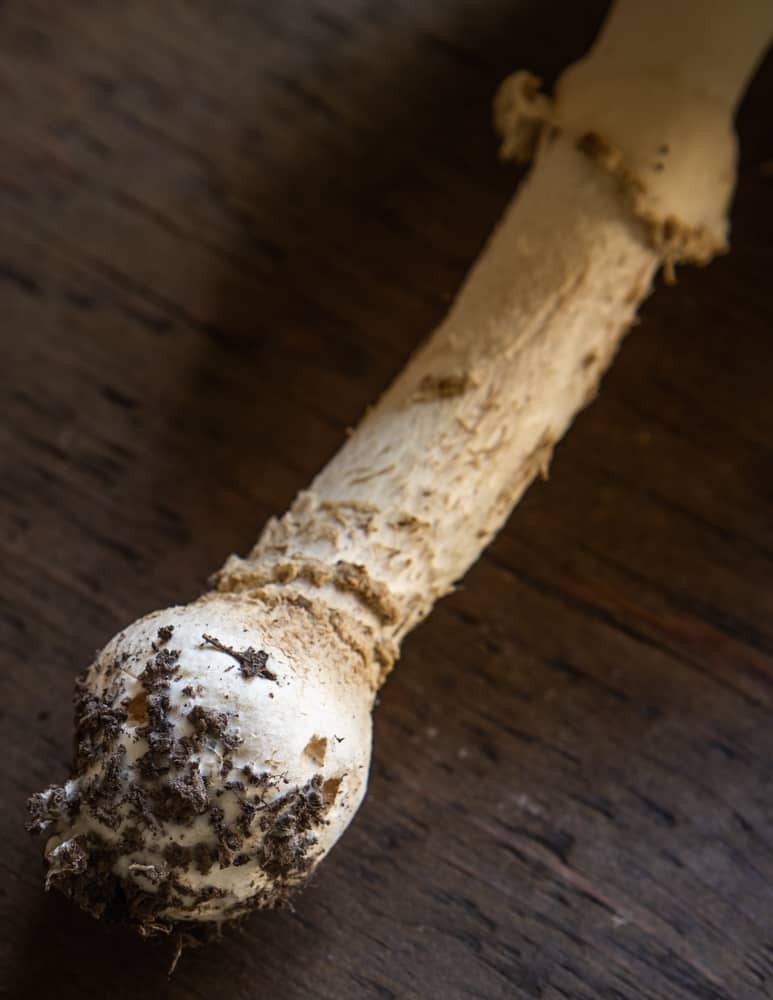
Amanita Muscaria Look A Likes
- Amanita flaviconia is much smaller than muscaria which can be as large as dinner plates.
- Amanita pantherina has a brown cap and contains higher amounts of ibotenic acid.
- Fly agarics are also related to deadly amanitas like A. bisporigeria.
Muscaria Variation Guessowii
This is the version we have in the Midwest that I see and harvest on occasion. I see them almost exclusively with young aspen stands in the fall and late summer. It's widespread and common.
In 2022 the name of A. muscarica var guessowii has been said to be changed to Amanita Chrysoblema. This has yet to be standardized.
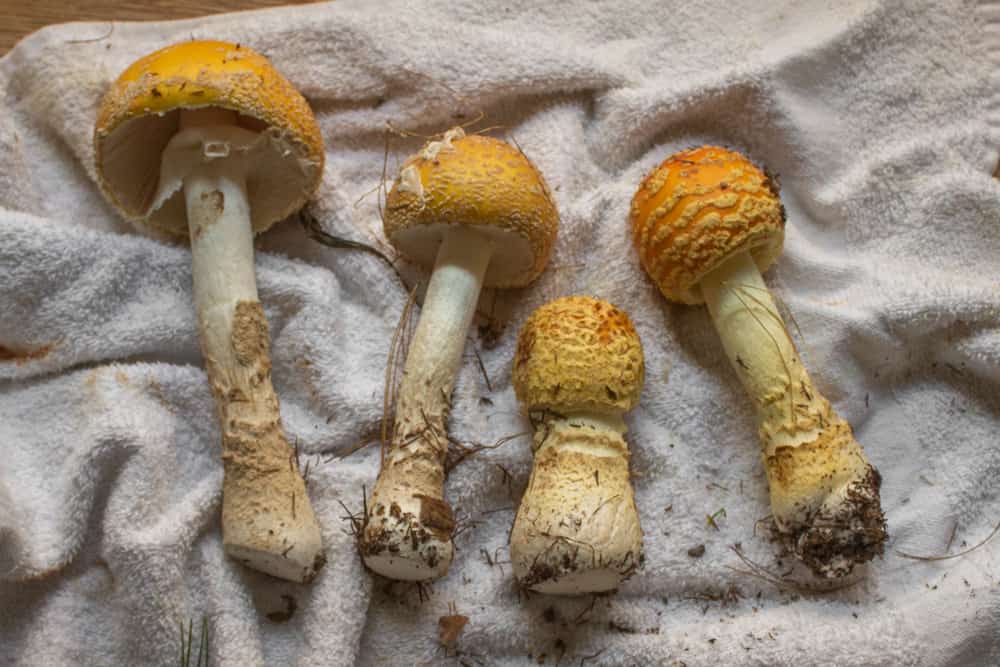
History and Mythology
There's all kinds of stories and legends about the famous red-capped mushrooms. Here's a few of my favorite anecdotes.
Vikings
Some people claim Viking berserkers would eat or Amanita pantherina before going into battle to induce their legendary berserker rage. I'm skeptical, but some people definitely believe it. This theory seems hotly contested and others say the consumable in question was a plant.
Soma
Gordon Wasson's research and study of the mushroom is documented in his book Soma: Divine Mushroom of Immortality. The book claims muscaria was the sacred plant used in religious rituals in Indo-Aryan culture of what's now Punjab in India.
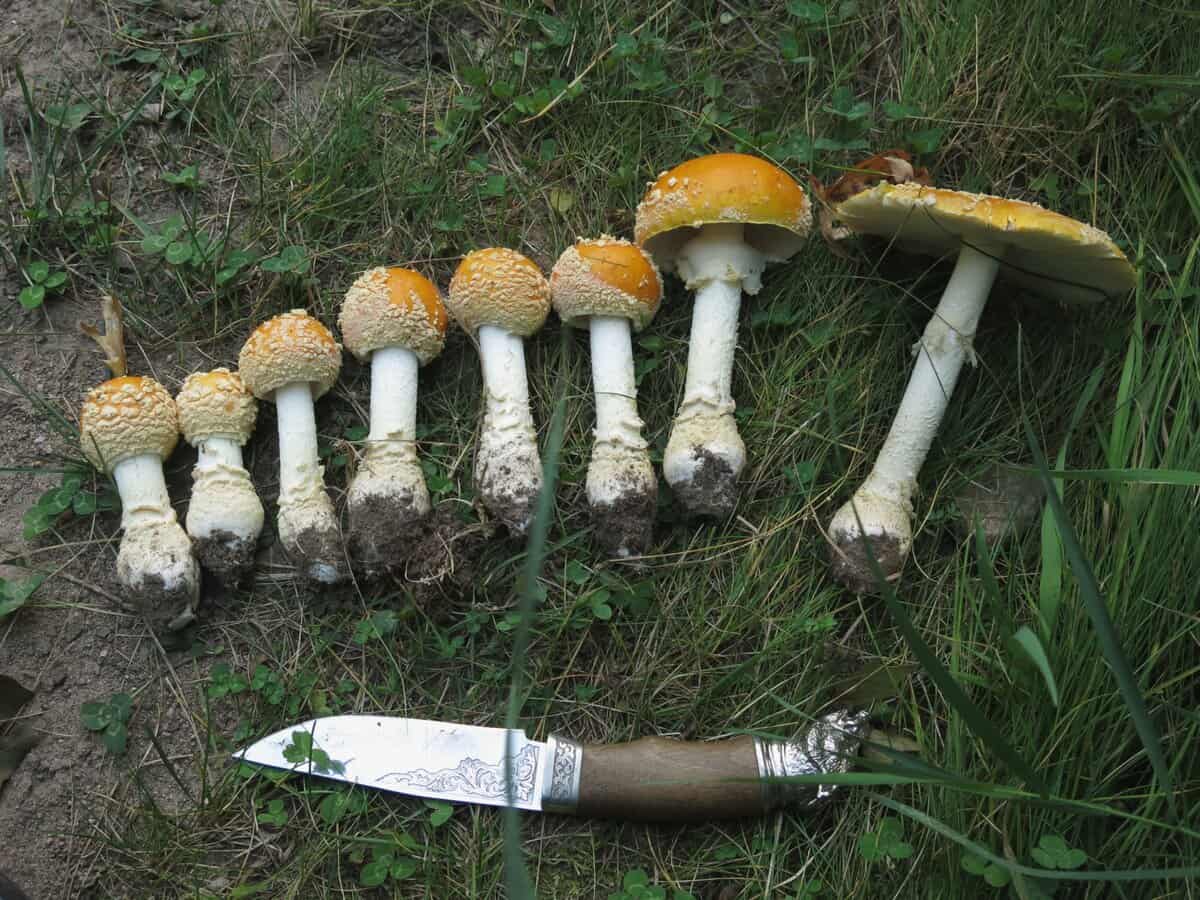
Koryak
Gordon Wasson says the Koryaks, a nomadic Lapland people who herd reindeer probably have the most colorful reputation with these mushrooms. The use of them has become an urban legend. Apparently the mushroom is important in entheogenic traditions and rituals.
According to legend a Siberian shaman eats the mushrooms, and a portion of the narcotic compound is filtered into his urine. Participants drink the urine to experience a hallucinogenic effect. While it sounds disgusting, it's entirely probable with what we know of mushroom toxicology.
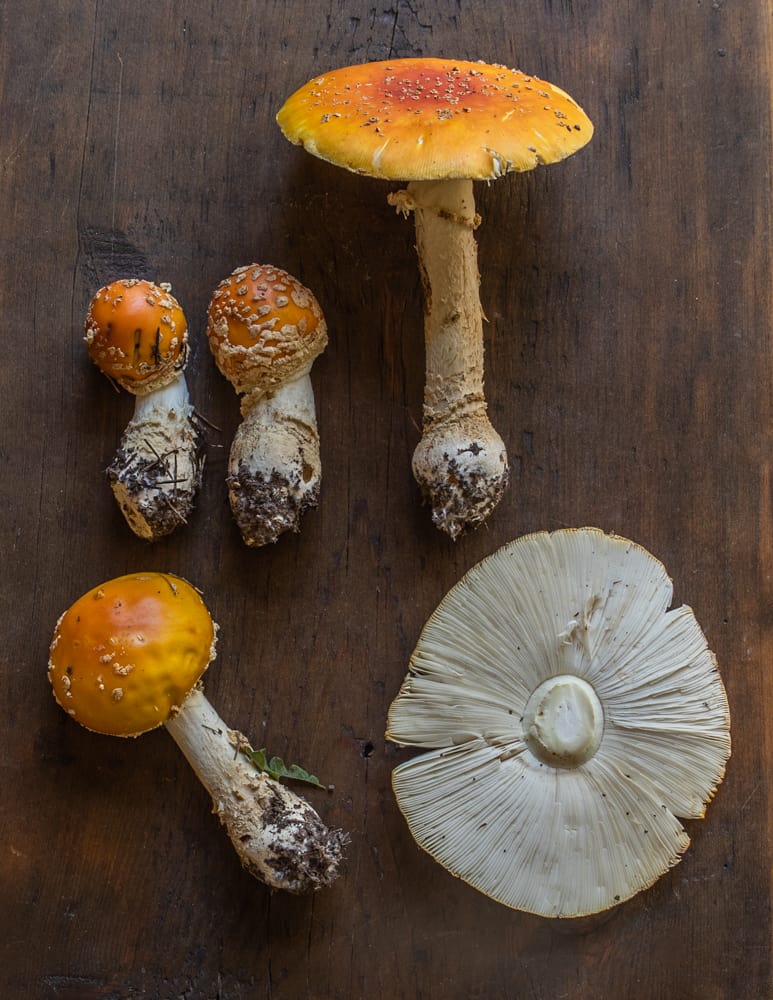
Is Amanita Muscaria Psychadelic?
In short, yes. The most well-known aspect of fly agaric mushrooms are their hallucinogenic properties. I'm not trying to tell anyone to eat muscaria to get high, unless you want to go to the hospital. As I have a bit of experience in the area, I'm sharing what I know.
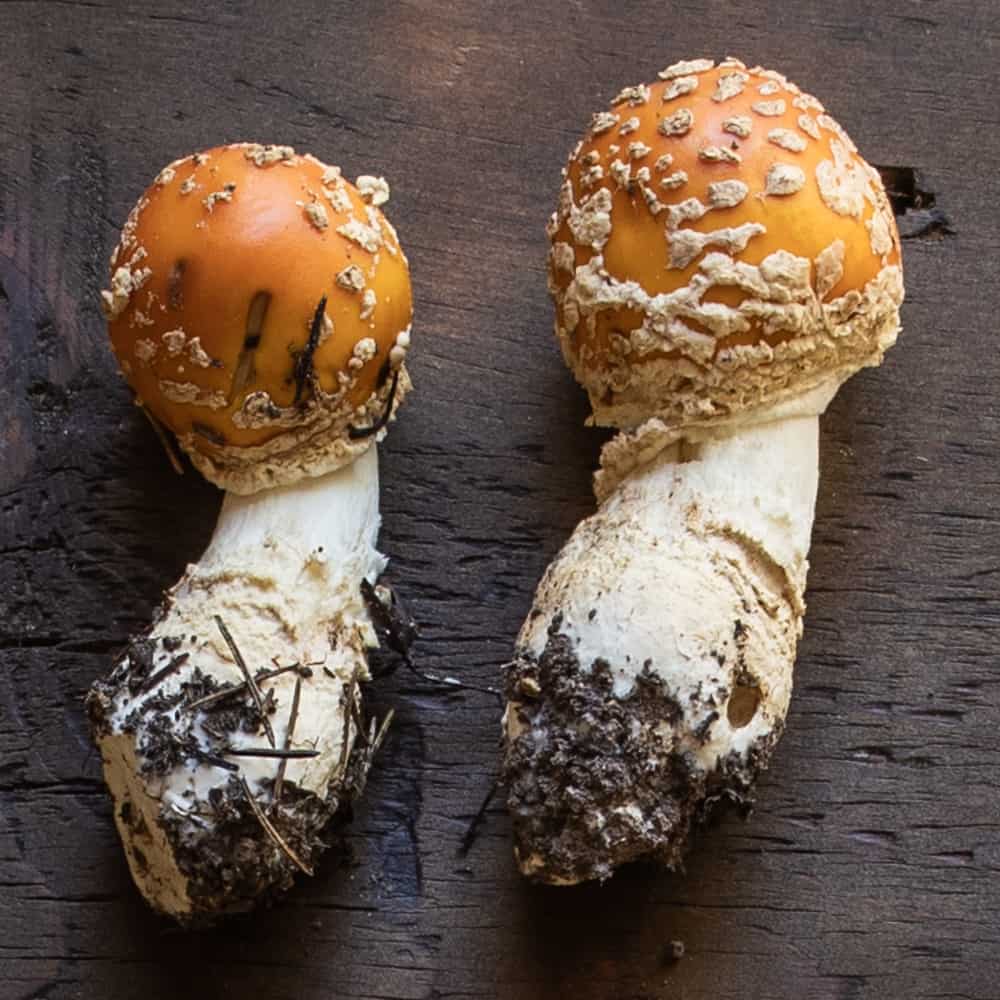
Muscaria is labeled as a poisonous mushroom or even deadly in most field guides. This could be due to the death of Italian Count de Vecchi in the United States and poisonings from narcotic use. Link at the bottom of the post for more on that.
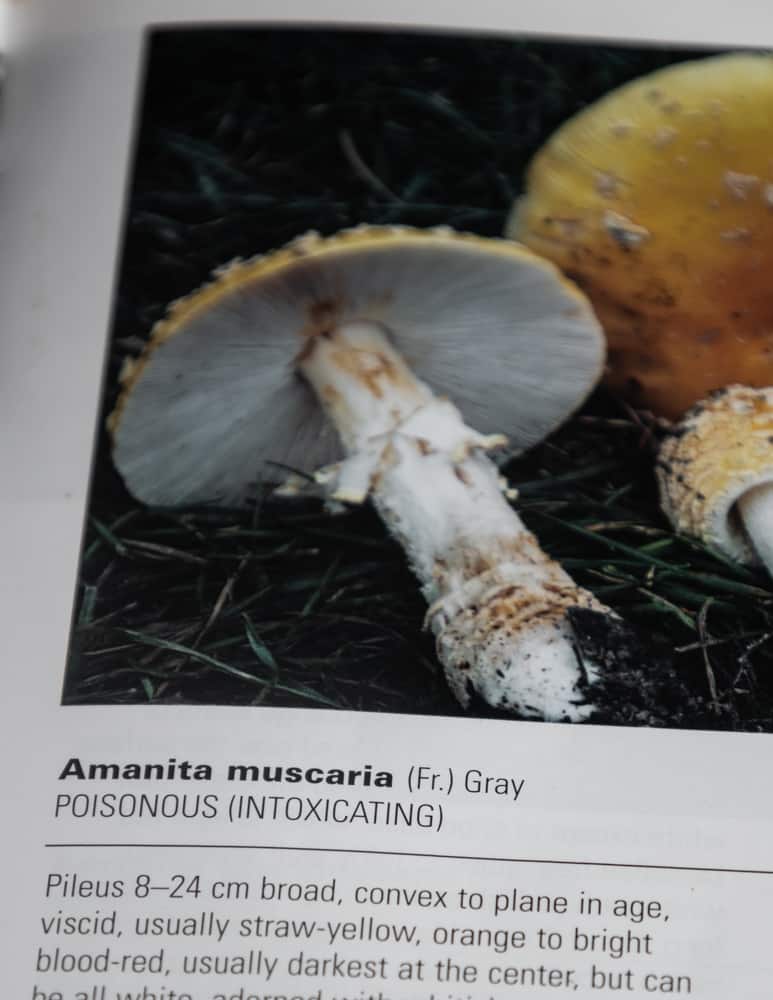
Most people I know that have taken muscaria say it feels like you're drunk with slight visual distortions. I've never used it personally, but I know a couple people that do. Muscaria are very different from common magic mushrooms. Treat them with caution.
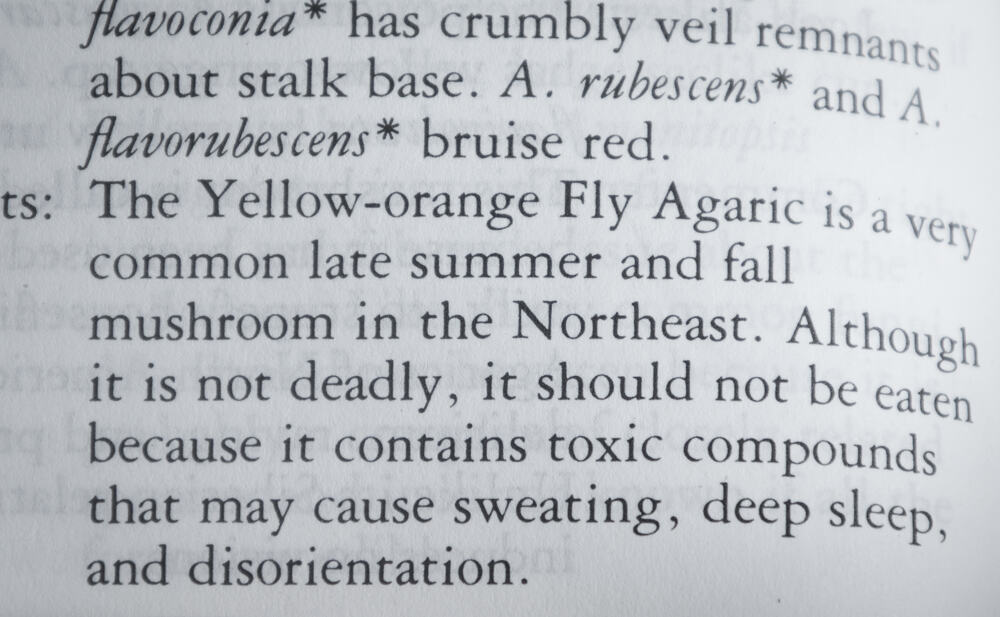
Eating too many muscaria caps can also be fatal. As mushroom foraging is gaining in popularity, it's something that will probably continue to increase as more people discover the hobby.
A fatal dose of muscaria has been said to be 15 caps, dried or fresh. Unfortunately cap size and weight aren't usually specified. To make things more risky, the compounds are thought to vary in concentration between collections. My friends in the mycological community have told me spring mushrooms can contain much more muscimol than fall mushrooms.
For more on poisonings from ingestion of fly agarics, see the 30 Year Poisoning Study by the North American Mycological Association at the bottom of this post.
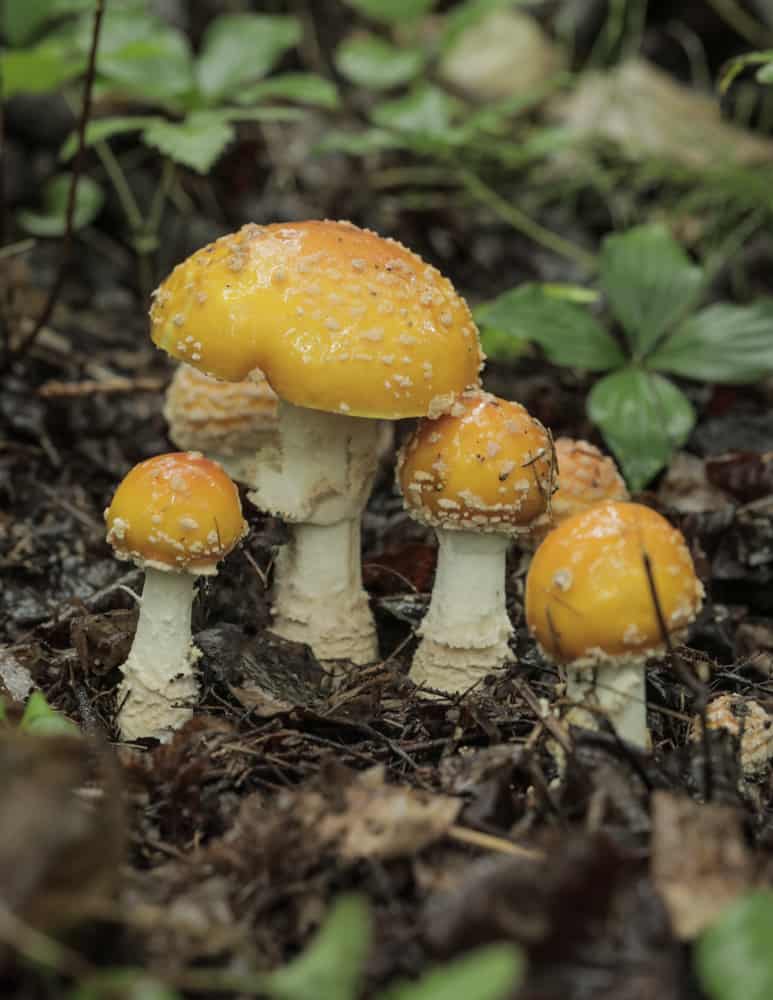
How to Prepare Amanita Muscaria
To prepare Amanita muscaria as a narcotic dried mushrooms are boiled in water and taken as a tea. They can also be eaten dried as for psilocybin mushrooms like the liberty cap. Muscaria should never be eaten fresh.
I did a podcast with a man who ate fresh muscaria and his experience terrified me. Some people also claim you can smoke muscaria, but that seems like an urban legend to me. Most information I see seems to disagree.
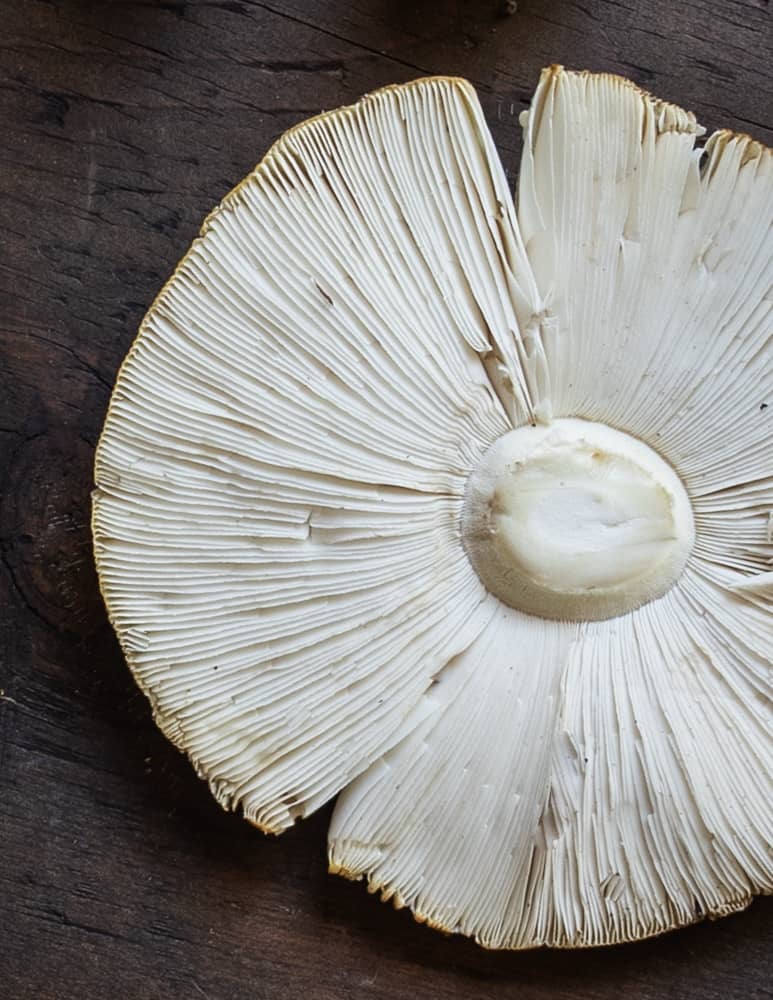
Toxicology: Muscimol and Ibotenic Acid
Fly agaric mushrooms contain ibotenic acid. When the mushroom is ingested fresh or dried, the acid converts into the psychoactive compound muscimol by losing carbon dioxide (decarboxylation). Muscimol is what affects the central nervous system.

Cooking Amanita Muscaria
Muscaria is edible and a documented, traditional food in Japan. But, the tradition is only said to be found in a small area around Ueda. The mushrooms are boiled to detoxify the psychotropic compounds, and then eaten after fermenting in brine, often in miso soup.

To prepare muscaria for eating they can be cut into slices and boiled. Some boil it twice. Mycologist David Arora was the first person I heard of to demonstrate this. I've cooked and eaten a good number of muscaria inspired by his research.
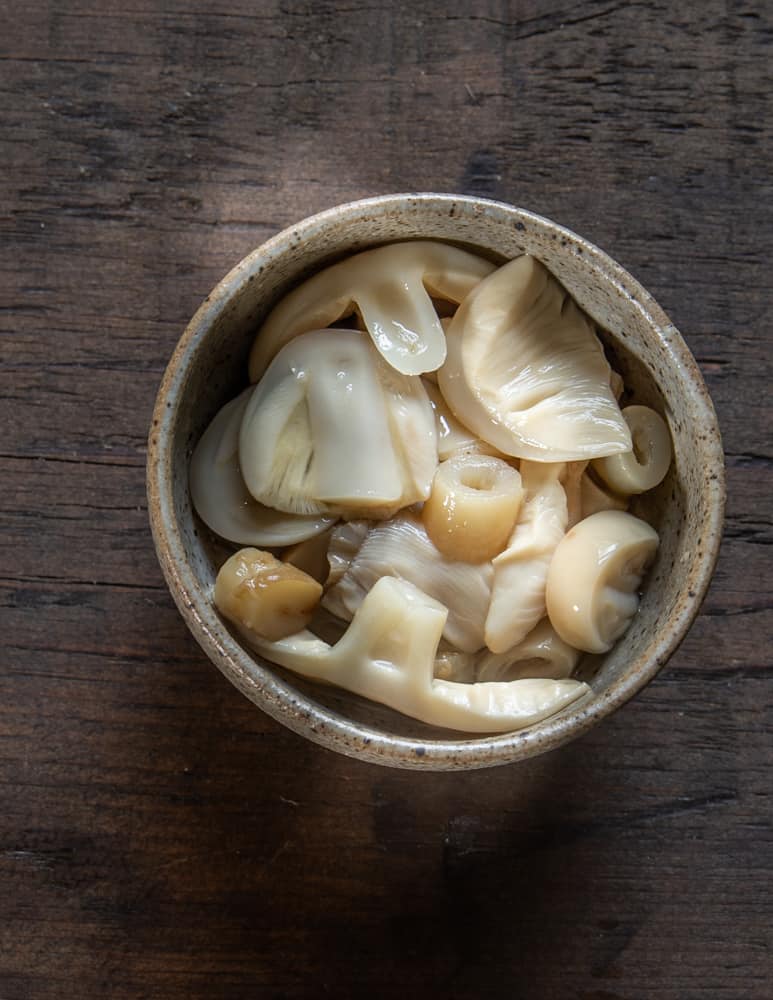
The fermented muscaria I've made were great in miso soup. If you want to know how to make the mushrooms safe to eat, there's a link below. This should only be attempted by foragers who can identify amanita mushrooms.
FAQ
Possession of Amanita muscaria or muscimol is legal in every state except Louisiana as of this writing. Dried muscaria is also sold in Wiccan and alternative religion stores across the United States every year, and dispensaries in New York.
To dry the mushrooms for sale or consuming they can be treated like any other mushroom. Cut the mushroom into slices and dehydrate at 145F until crisp and bone dry. Dried mushrooms appear to lose their potency over time.
Related Posts
On Cooking False Morels, Gyromitra
References
This is a Philosopher on Drugs
A Study of Cultural Bias in Field Guide Determinations of Edibility Using the Iconic Amanita Muscaria as an Example
North American Mycological Society: Poisoning of Count Achilles de Vecchi

Mike
Hi, great artical. Very informative thanks. I've been using Liberty Caps for years. Just one or 2 a day. I feel that they greatly improve my quality of life, once or twice a year I take a psychoactive dose, for a deep cleanse. This year I started using Aminita Muscaria. Again just microdosing. I brew a tea with them. So far just lucid dreams and a feeling of well-being. I do plan on taking a trip dose eventually. Amanita grows really well where I live, Shropshire in the UK. As do Liberty caps. Happy foraging guys and thanks once again.
Nick Tofan
Hi Mike , what do you consider to be a microdose ? I assume it is dried and you make tea.Thanks Nick
John gallimore
Mike, when you ingest your “trip dose” can you please let me know your post thoughts and feelings. I live in the South Jersey Pine Barrens along the Atlantic Coast and I’ve just recently started finding these shrooms in the Pine Woods. Trying to up my forage game for medicinal in this wonderful area
Alan Bergo
Be careful with these and don’t eat them fresh/raw. Re: Muscaria as a medicinal, there’s now branded Muscaria gummies on the market, and more importantly, imposter products often bought off the dark web that contain fentanyl and have caused fatalities.
Jah Livity
I've heard that there's a growing belief that some mushroom species indeed grow in cycles, which could explain the inconsistencies in their growth year to year. It's worth checking back regularly. Factors like humidity, soil temperature, soil moisture, recent rainfall, and ambient temperature all play a role in mushroom hunting.
Al
I couldn't find any mention of this on your site, but an interesting mushroom to consider trying (after identification by an experienced/certified mushroom forager of course) is Amanita jacksonii, or the American Caesar. It may not be common near you, but it's found in the Eastern U.S. It's very striking looking with a striated red cap and orange-yellow stem.
It's considered a choice edible and is one of only a few mushrooms that can be eaten raw. I've had it with a bit of olive oil and lemon juice, and personally I think it tastes like tomato.
Alan Bergo
Absolutely. I loved them in France where they leave them out at the market raw with salt and oil for people to taste. I hired someone to ship me a bunch from AK? Last year. I have to write up my notes, edit all the images and hopefully get it up this summer. Fantastic mushroom.
Mind Trek
Thanks for sharing this enlightening post!
Alan Bergo
You bet.
Mind Trek
Your blog is a treasure trove of knowledge! I love how you delve deep into various topics and present them in such an engaging manner. This post, in particular, was incredibly informative and well-researched. Thank you for sharing your expertise with us. Visit us!
Neal cobb
Far out man........peace
Alan Bergo
Thanks Neal.
Leigha
Thanks for all the info on this fungal friend! One question I've been sitting with that perhaps you can answer: last year, we had these puppies EVERYWHERE in our East-Central Minnesota woods (wetlands with higher portions growing various deciduous groves of aspen, oaks, basswood, maples with a few conifers here and there), and this year I haven't seen any. Not one. Is it just for want of rain, or is Yellow Fly Agaric like Sweetgrass: if humans ignore them, they go away?
Alan Bergo
Oh no they won't go away. Things fluctuate heavily due to rain. Check on the spots after you get some more rain.
Joseph
I've heard that there's a burgeoning belief that some species of mushrooms grow in cycles. That's perhaps why their growth isn't always consistent year to year. So be sure to check back. Humidity, soil temperature, soil humidity, when it rained last, ambient temperature, all come in to play when hunting mushrooms. Hope this helps!
John Collier
Im in Eastern NC and I think they have found me. I see amanitas everywhere and we have the yellow muscaria in our area along with brown , I pick these and microdose as it seems to help and increases sensory and awareness and brings you closer to nature. I usually take about a quarter dried cap a day but not everyday.
Alan Bergo
Thanks for the info John. Not a lot of people share their experiences with it as an entheogen.
Greg Kirchner
I am in SC lowcountry. Lived near the GA border for 20 years with 2000 acres of pine and oak forest behind our house. Usually we gather chanterells July to September. We came across 1 grouping of 5 bright red ones one December and a single bright red one in another February. Then another orange one another year in January. That's was it. Only stumbled upon them when not looking for them. When I wanted one could not find them. Now living in SC lowcountry near North Carolina and have found the orange ones this November everywhere. Just made tea. How does one post pictures here?
Alan Bergo
Sorry Greg for a number of reasons I can't support images here. You can post in facebook mushroom groups, yahoo mushroom groups, etc.
Nikolas
Great information in my opinion, by the way I made a very effective cream of fly agaric not too long ago
Eric B Rasmusen
https://www.fungimag.com/archives/Count.pdf is a link for the Count who Died. The link in th article is dead. Thanks for writing the article.
Alan Bergo
Thanks Eric. I updated it.
Salmon
I found a bunch of these growing in my yard here in upstate NY today 10/16/2021. After collecting and cleaning I have them in my dehydrator.
I read in the article here that the stems taste like calamari when cooked, question, while I read also that only the caps are active are the stems also? Or should they just be used in the described cooking method or discarded?
Thanks also, very recent article here. Everything I was finding was from early 2000's 😁
Lance Shaver
I just picked 3 rather large shrooms can I just dry them and eat them. Will this cause me to hallucinate and how much of it can I eat safely without boiling it just picking and drying them
Alan Bergo
If you have to ask me questions like that you need to re-read this article.
Tyler
I saw 15 is fatal... 🤣🤣🤣 but varies due to potency between individual mushrooms picked. 🍄
Alan Bergo
Yeah I can't speak to dosage here, and I doubt I ever will.
Michael DeLuca
This is phenomenal information, thank you. I am extremely grateful for the frankness, exhaustive detail and perhaps most of all the lack of hype/woo/handwaving. Really great.
Alan Bergo
Thanks Michael, yeah the woo-woo is strong with A. muscaria, I don't play that at all.
Mirja
Just sauteed a few up, delicious! Got a bunch I'm gonna cook up later this week and ferment some.
Desmond
I happen it stumble apon a good size patch of Amanita after they are dried wood is there a place that buys them they are the yellow to orange caps with the white dots any info wood be helpful or if I can’t sell them at all
Thank you
Alan Bergo
Consult your local Wicca or alternative religion store. Health stores will think you're crazy.
Mike
Do u have to add salt when boiling amanita, fly type?
Alan Bergo
Salt seasons the mushrooms and makes them taste good.
don francis
I ate about a 1/2 teaspoon of The Orange- Red Aminita Muscarta Guessowii. In 45 minutes saw brighter lights, a sense of well being and got into Pink Floyd. Did another half a teaspoon and crashed out and slept great! No hangover.
Robert Rowe
I just found a "flush" of these this morning, after a week or so of regular rain and beginning of MN's cool fall weather. Near Pine City MN, in the grass at a field edge below some larger 3rd growth pin oaks mixed with younger aspens/poplers/white pines/fir trees. Came here on searching Google for species verification- Would post some pictures if it were possible.
Geo
They are in mountain iron MN now too, I wish I knew exactly what they were!!
olli
worthy of a note is also almost identical, Amanita Aprica, which can be identified unlike A.Muscaria's wart-like cap, as having a more smooth, uniform white , later breaking cover on it's cap.
Amanita Aprica is liver damaging.
Sam
olli, I think you're confused about it. Do you have a source that proves your claim? http://www.amanitaceae.com/content/uploaded/pdf/aprica.pdf states someone had a reaction in his tongue and felt something where his liver is, but seemed fine otherwise, and only had a small piece of the shroom. the one who ate it to toxic levels, who may have had a different species, had no report of liver damage.
Debbie Viess
Aprica has the same or very similar toxins that are found in muscaria: ibotenic acid and muscimol. It does NOT contain amatoxins, which are the liver destroying toxins found in the Death Caps and Destroying Angels.
The universal veil of aprica actually grows into the cap skin, so it cannot be removed with a fingernail. The warts on muscaria, pantherina and gemmata can be easily removed. None are recommended for the table, despite the fact that those toxins are water soluble.
Aprica has caused serious poisonings, but not deadly poisonings and not liver damage.
BTW, the universal veil on an amanita is called a volva not a vulva. Two very different structures, on two very different organisms.
MaRi
actually the volva is the cup-like remnant of the universal veil left surrounding the base... & yes, they most definitely are two very different structures!! lol ;P
Debbie Viess
Glad that we are in agreement on that spelling and those diffs! 😉
AS to the volva ... that is merely another word for the universal veil, which takes many forms as the young amanita grows and develops. Warts on an amanita cap are also part of the volva, as are the rings around the base of a muscaria, or bits of flocculent material on the stems of blushers or lepidellas. A volva is NOT merely a cup at the base of an amanita stem, but all of these structures, too.
Sam
Deb's right.
Spence Gibbs
No one said anything about a vulva Karen.